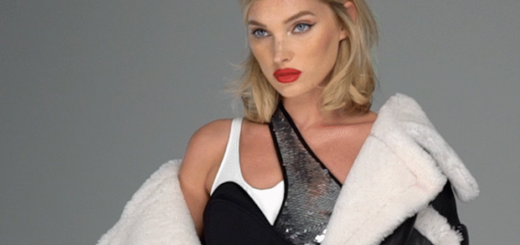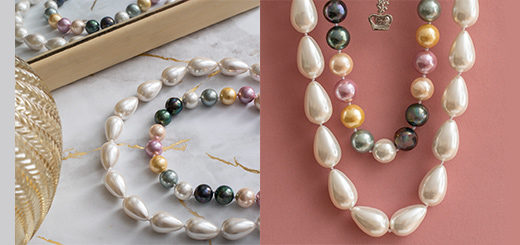Wild as SKYE
Visit the Dramatic Island Alexander McQueen called his Ancestral Home. Indulge in the Bold Tartans and Bountiful Heritage of Seafood & Boutique Whiskey straight from the Larders of the Norse Gods.
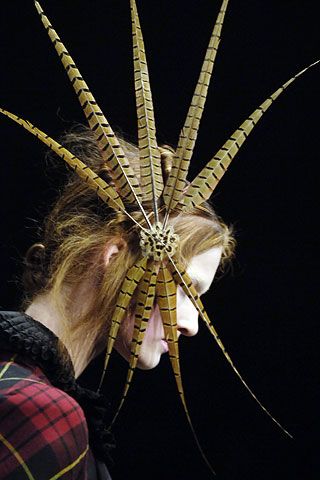
Image Credit Vogue UK
Alexander McQueen Pheasant Feathers
For sizzling-hot fashion in a not-so-hot climate, the Isle of Skye, that idyllic emerald fairyland moored off the Wild West coast of Scotland, has to top the ‘must-do’ list of every fashionista, foodie, hill-walker and tree-hugger. This is an intense little island with a rich spiritual landscape awash in history and legend. Conjure up in your mind’s eye the craggy, spear-like mountains that explode from the island’s heart, slashing the skyline as if fashioned by the gods themselves … and the dramatic, rugged peninsulas and cascading waterfalls that pour out from the mountain core, running to spectacular sea cliffs, lochs and stacks. Now close your eyes and breathe in the pure clean sea air, feel the sea spray on your skin and hear the seabirds screeching. You’ve arrived at the inimitable Isle of Skye.
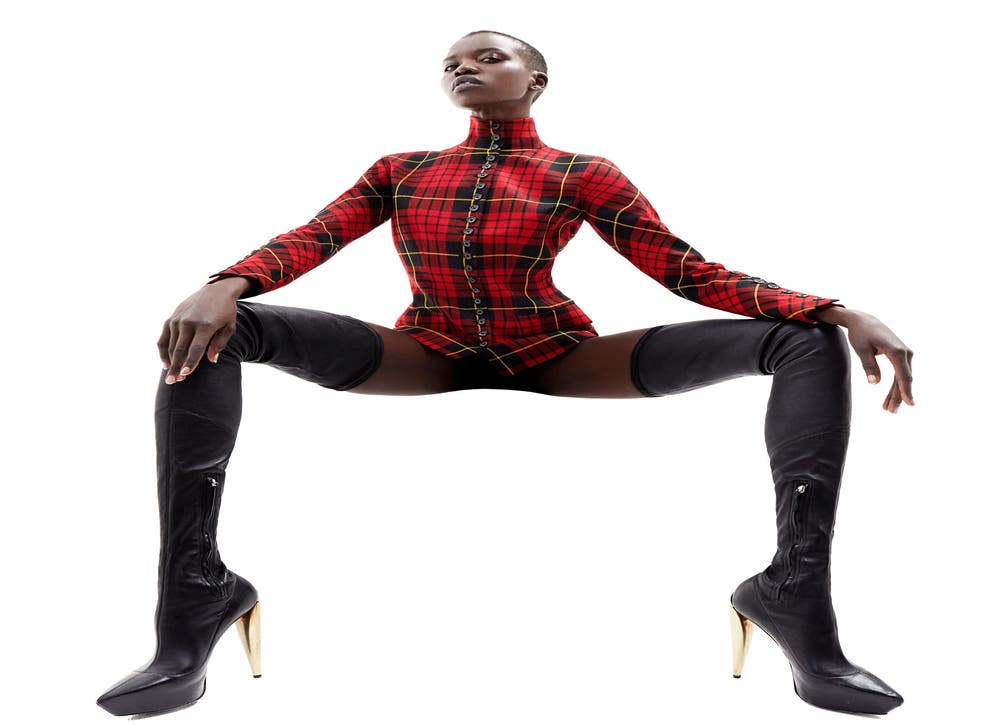
Image Credit Vogue UK
Alexander McQueen Tartan Tribute
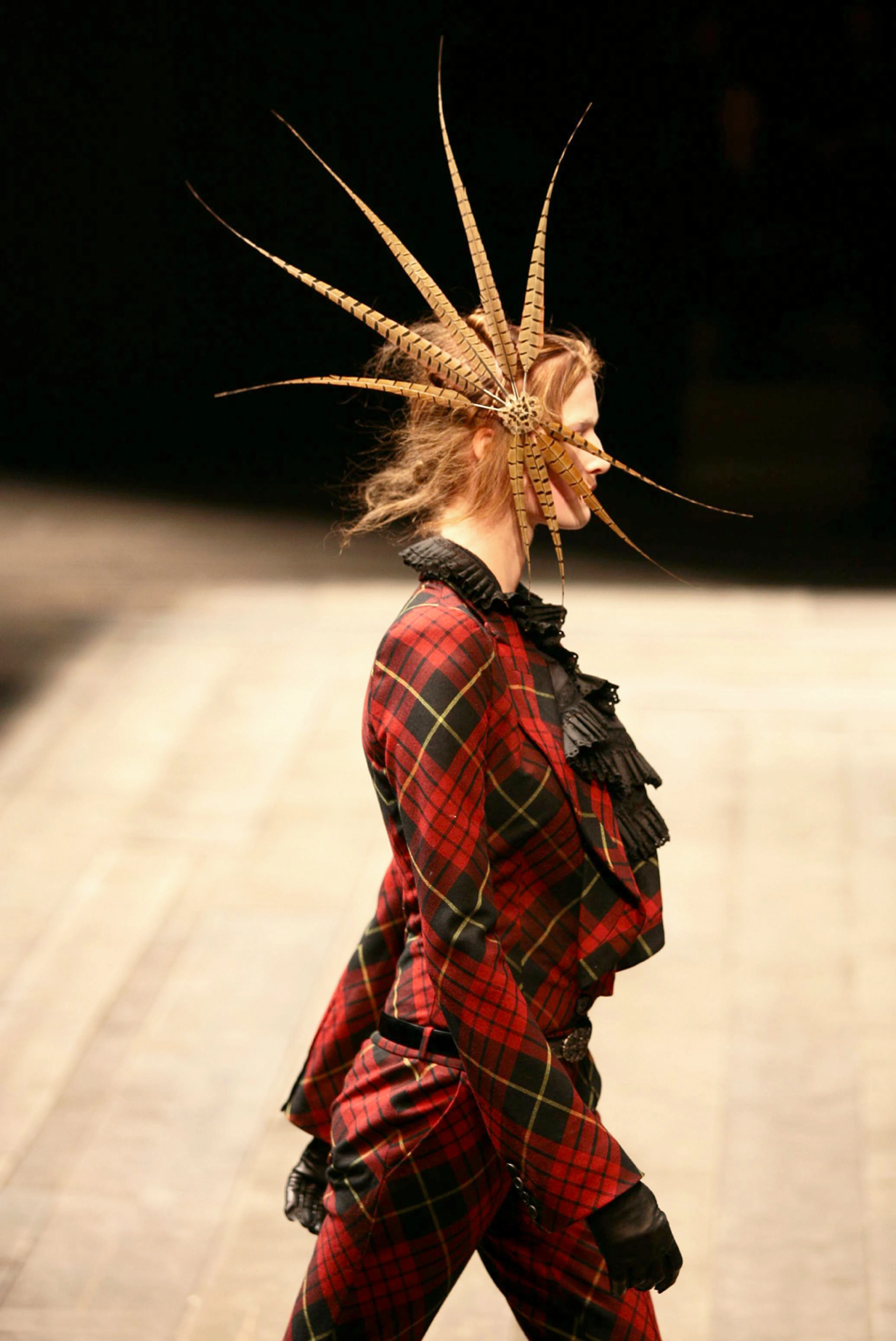
Image Credit Vogue UK
Alexander McQueen’s Pheasant Feathers 1995
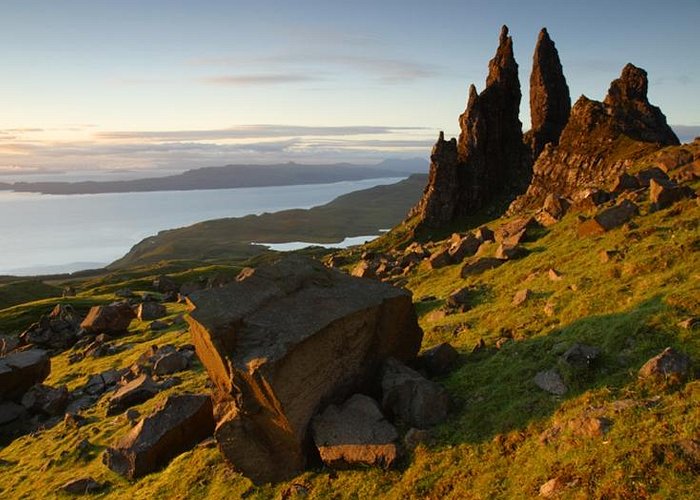
Image Credit Trip Advisor
The Old Man of Storr
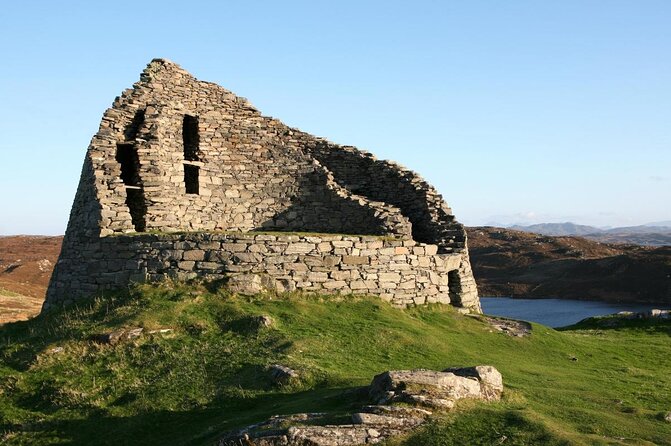
Image Credit Viator
The Broch at Dun Carloway
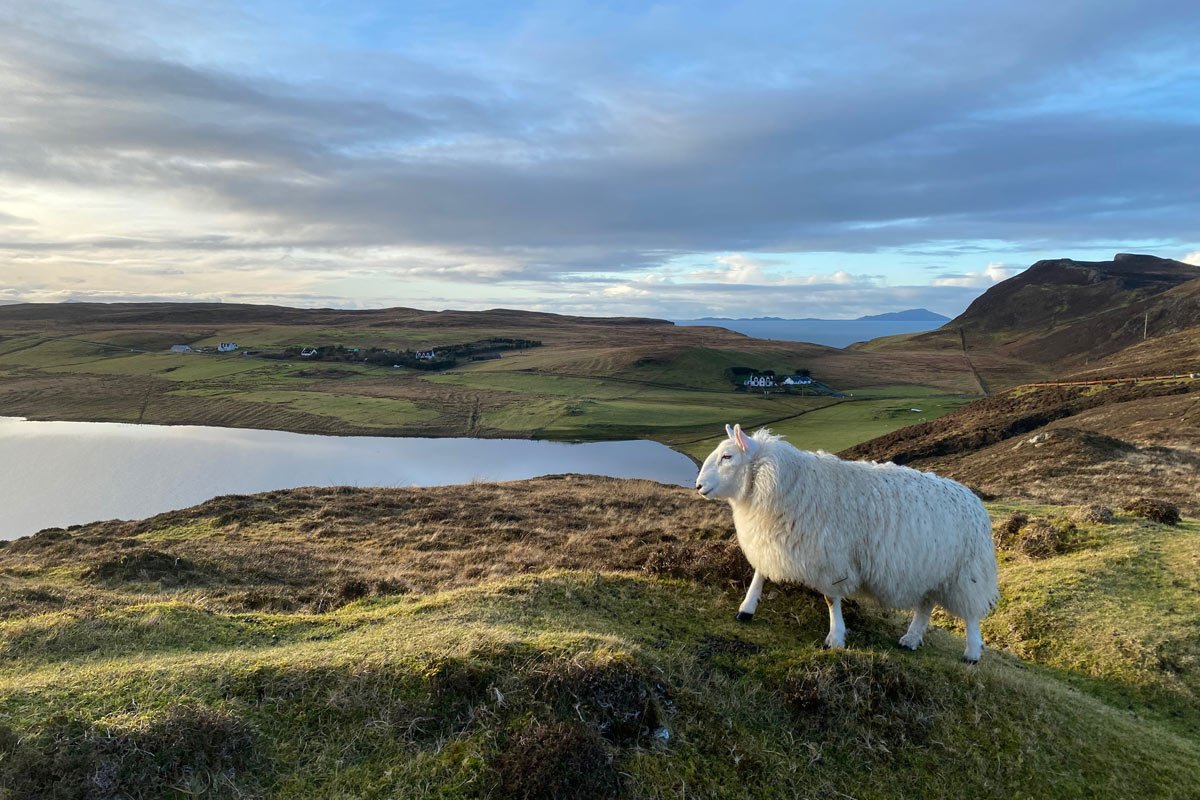
Image Credit Vogue UK
Skye Wool!
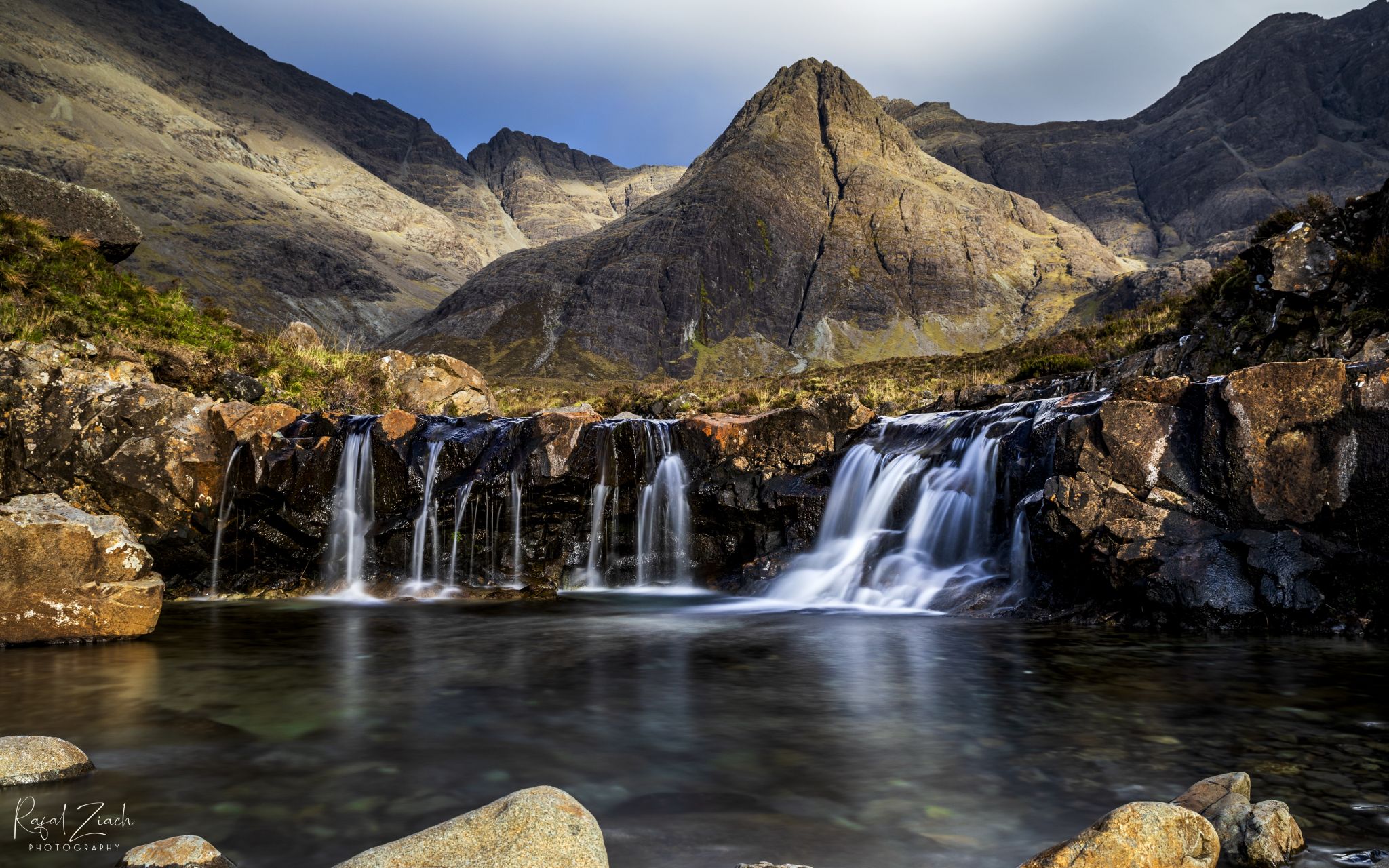
Image Credit Rafal Ziach
The Fairy Pools, Glen Brittle, Skye
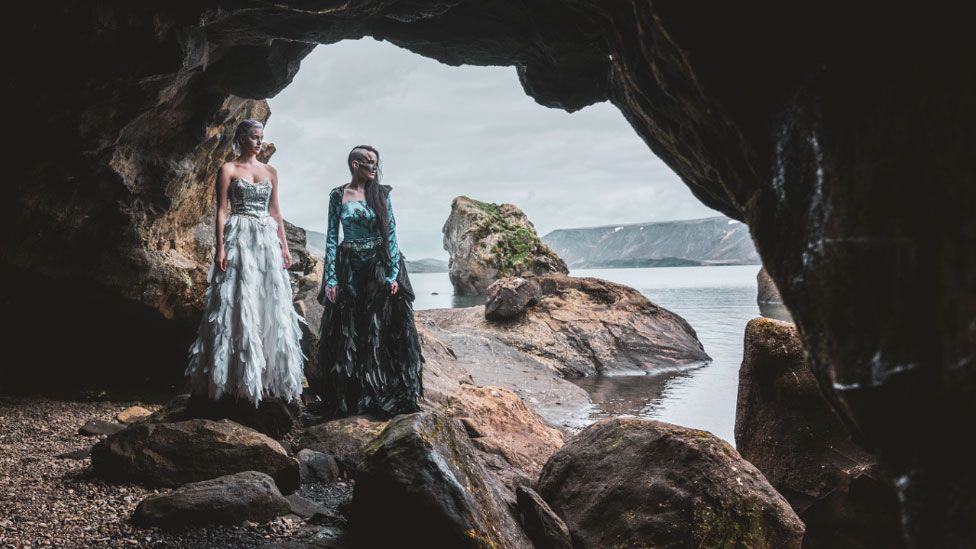
Image Credit
Skye is the setting for the Cries of the Heart Vikings vs Celts TV series
It’s perhaps the lost world of the Highland clans, their tartan and targes, kilts and claymores that so conjures up the wild romantic spirit of Skye. Like the brochs of old (brochs are uniquely Scottish tapering stone-built circular towers) a handful of crumbling castles still cling to the ancient basalt crags, still guarding the Isle of Skye. The landscape is first and foremost a geological feast for the eye, but the other otherworldly qualities of the Isle of Skye have also provided plenty fashion, food, film and lifestyle inspiration over the years.
Over the millennia the ancient trades of weaving, fishing and seafaring have flourished on the island. Today the old traditions are very much abundant, tartan and tweed abound, the woolly white sheep herds still drift over the hills and the oh-so-cuddly furry Highland cows still adorn the corner of the occasional field. Boutique restaurants offer the freshest of wild river and sea fish, moorland and mountain game, all delightfully served in tin sheds or turreted castles … take your pick of venue! And annually thousands of keen holiday-makers flock to Skye to stay in the many picturesque Airbnbs or campsites on offer, to experience this last piece of untouched wilderness, Highland midgies and all!
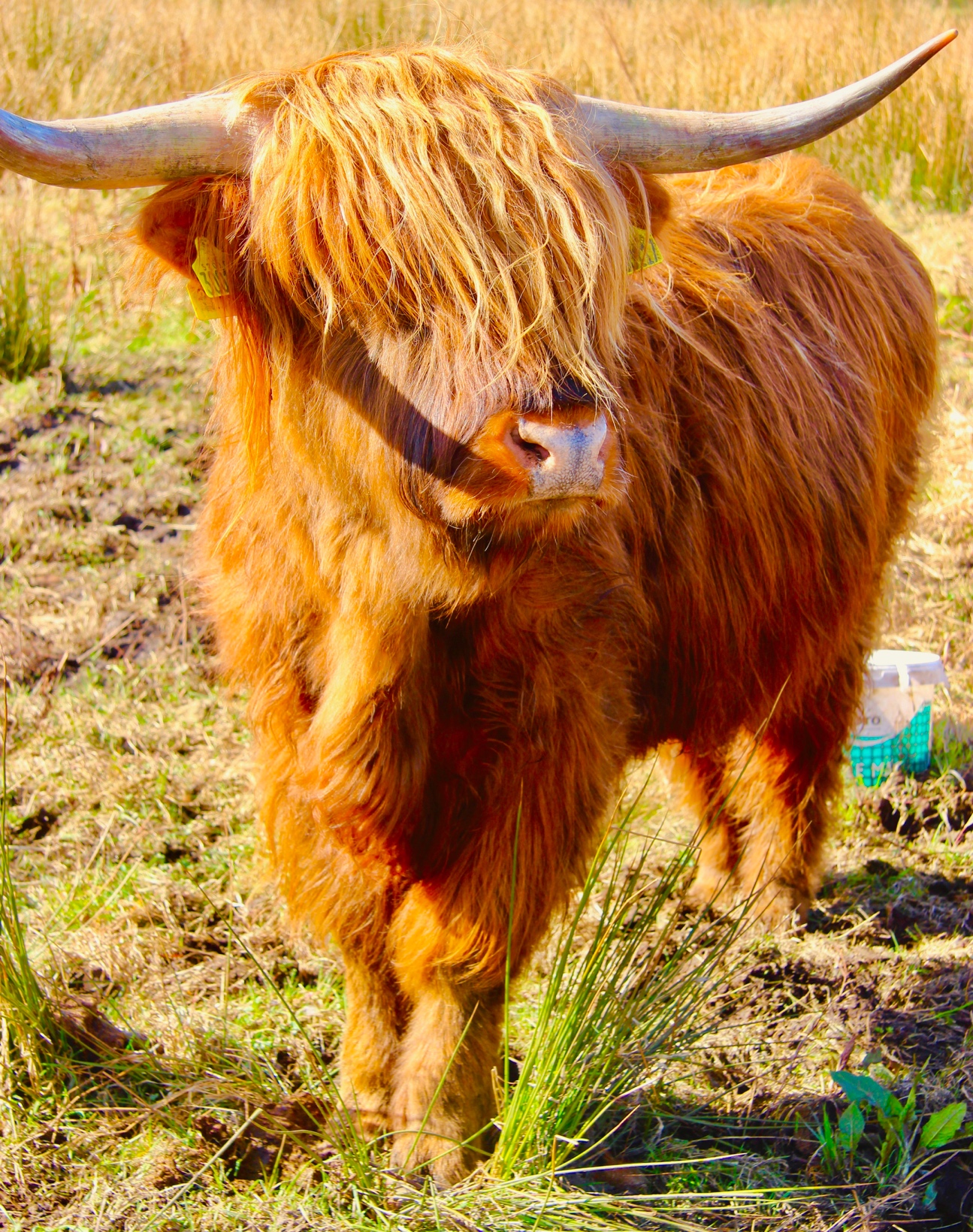
Image Credit Cécile Paul
Meet a local, the adorable fluffy Highland cow!
For those fascinated by history, Skye was part of the Kingdom of the Isles, a realm that succeeded the Celtic and Viking worlds and was not part of Scotland until the fifteenth century. Skye was the setting for many of those romantic tales of the Highlands, from the Macdonalds’ and Mcleods’ clan feuds to Bonnie Prince Charlie’s flight following the battle at Culloden. Like its everchanging weather, the history and culture of Skye is as intense as it is varied.
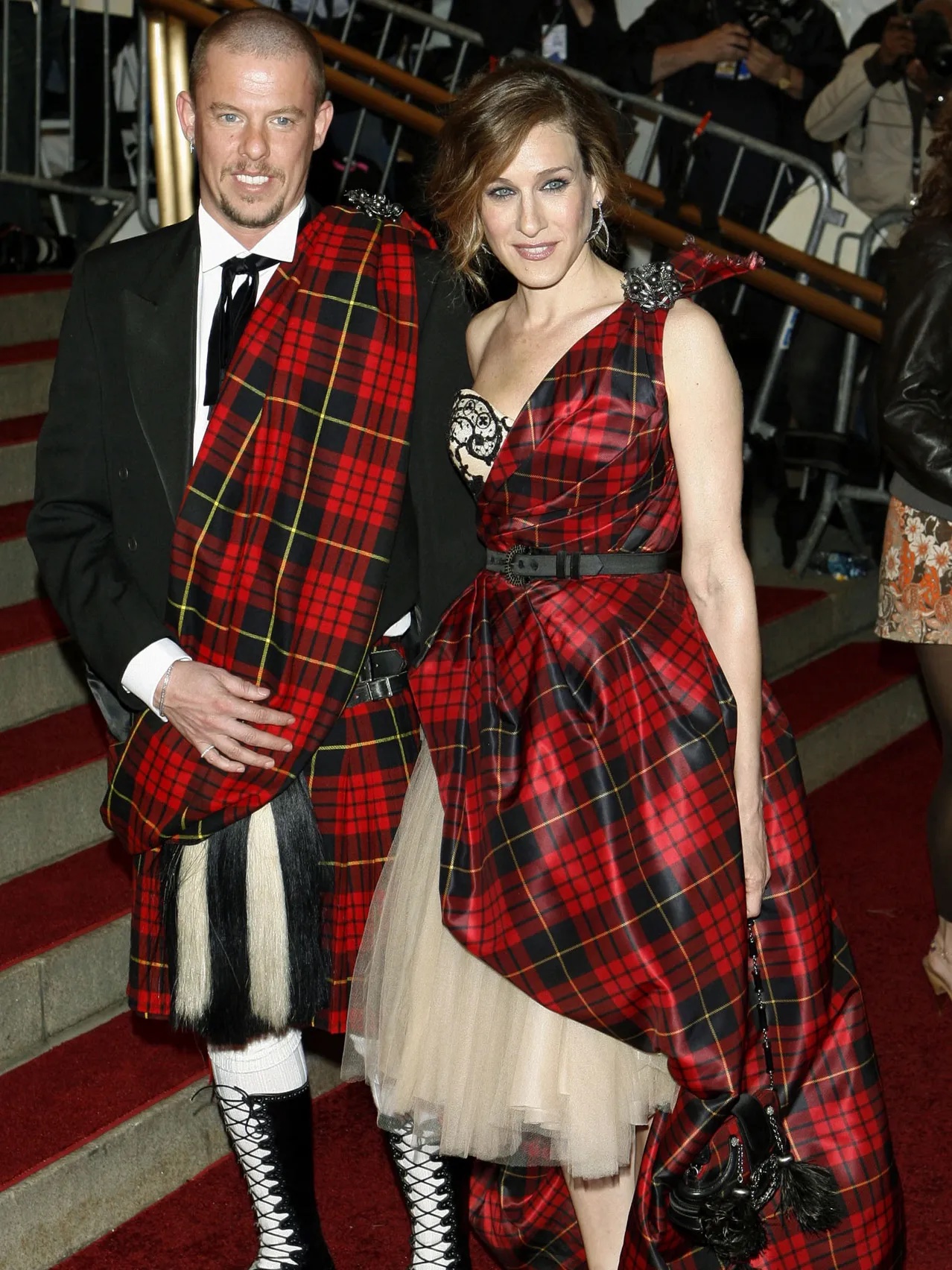
Image Credit British Vogue
Alexander McQueen and Sarah Jessica Parker draped in McQueen’s ancestral plaid.
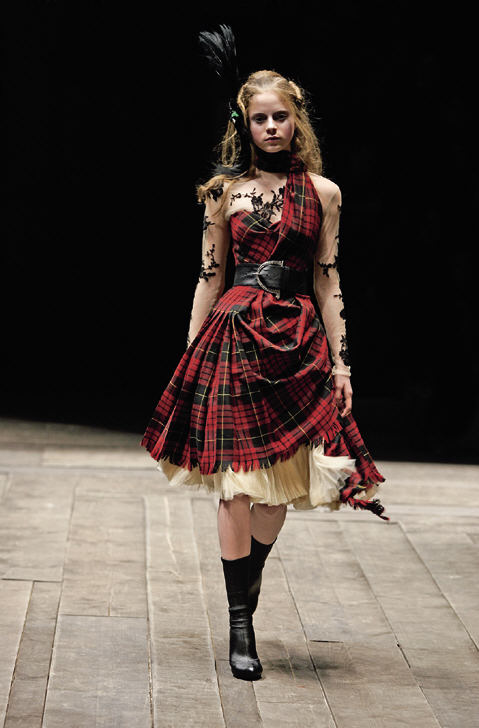
Image Credit CityLive
Alexander McQueen: Highland Dress 1995
FASHION
Legendary fashion designer Alexander McQueen, whose father had emigrated from the island, never forgot his Isle of Skye roots and was determined to use the fashion catwalk to celebrate his island and his past. McQueen wanted to use traditional fabrics in his ‘Highland’-themed shows, particularly his own vibrant and burning red ancestral plaid. Tartan triumphed again for Skye, reconnecting us with this romantic distant isle.
McQueen’s tartan creations are neither traditional nor punk, they are fitted and crafted, elegant and fine and perhaps a little daring. Back in 1745 Scotland, tartan was regarded as the badge of the rebel and the wearing of the kilt was banned. Ever since tartan – at least in Scotland – has had a political edge, think Dame Vivienne Westwood’s unforgettable punk culture pieces of the early 80s. Tartan uncannily is a cloth of many faces: it can be ‘very establishment’, the look of lords and ladies, but with a tweak (and worn with attitude!) this iconic woven pattern continues to be an edgy and provocative alternative to both punk and rebel. Oversized or super sexy and super tight, this fabric – favoured by Alexander McQueen, Vivienne Westwood and Yohji Yamamoto – has conveyed a mix of enduring political messages in its time, and likely will do so for decades to come.
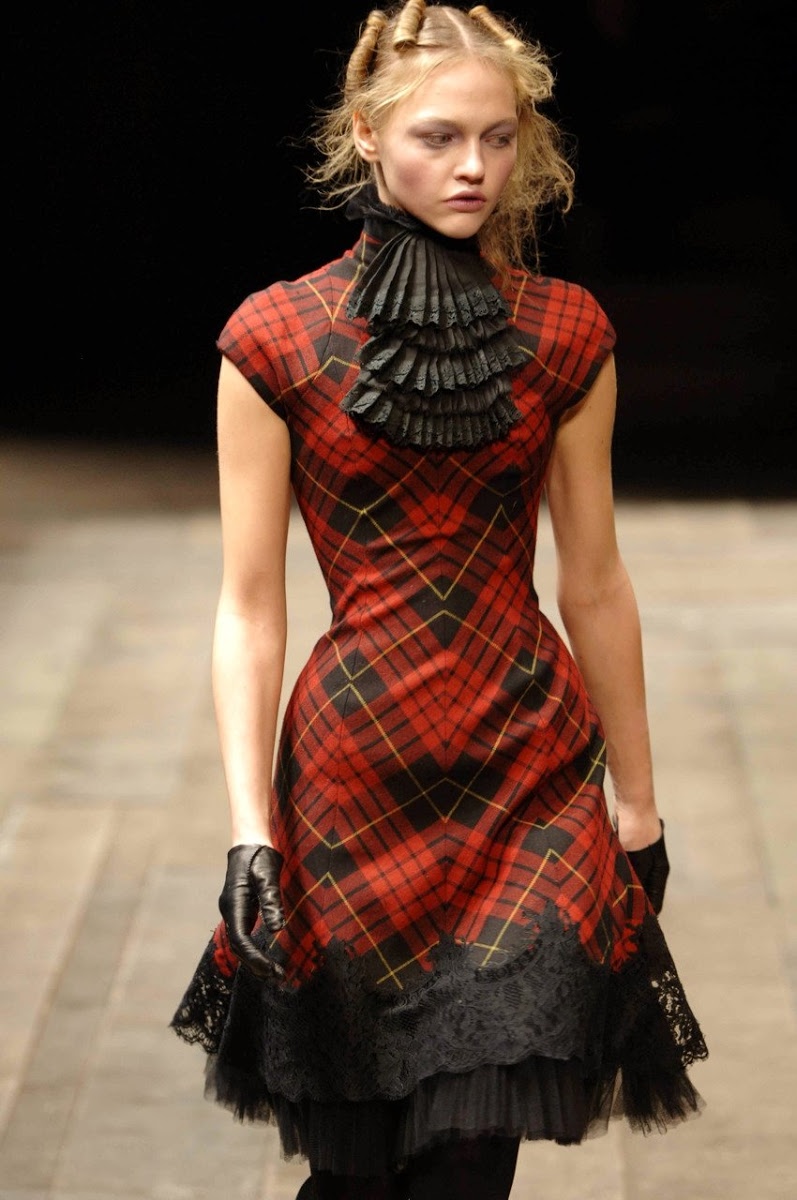
Image Credit Google Arts and Culture
Alexander McQueen Fitted Plaid 1995
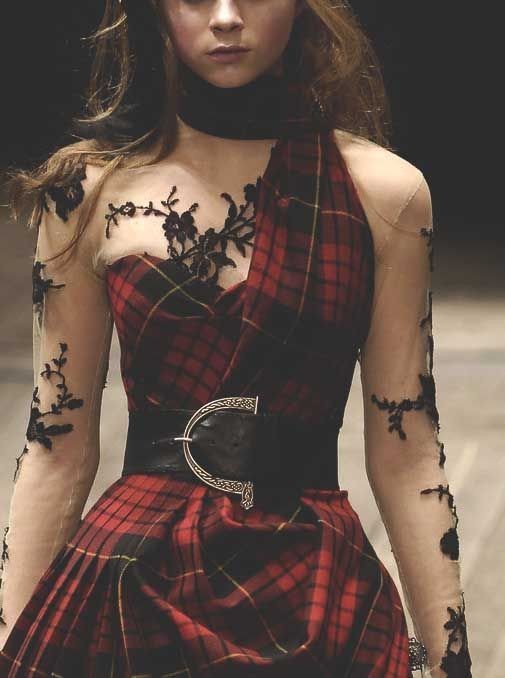
Image Credit dazeddigital
Alexander McQueen’s ancestral tartan
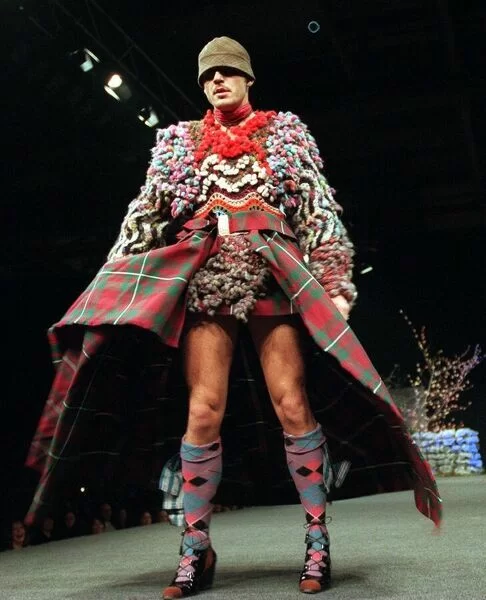
Image Credit Media Storehouse
Vivienne Westwood’s take on tartan
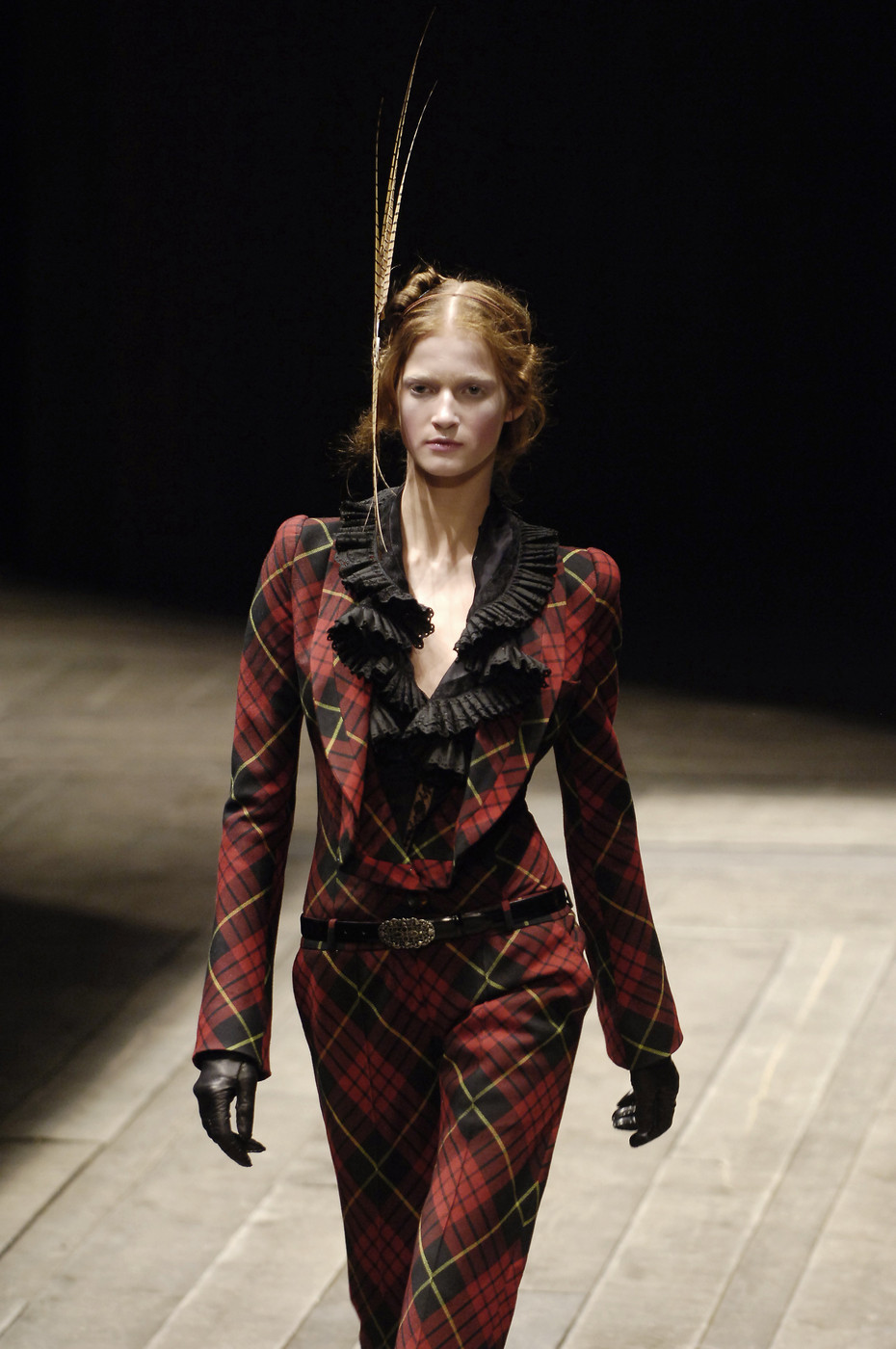
Image Credit dazeddigital
Alexander McQueen’s tartan
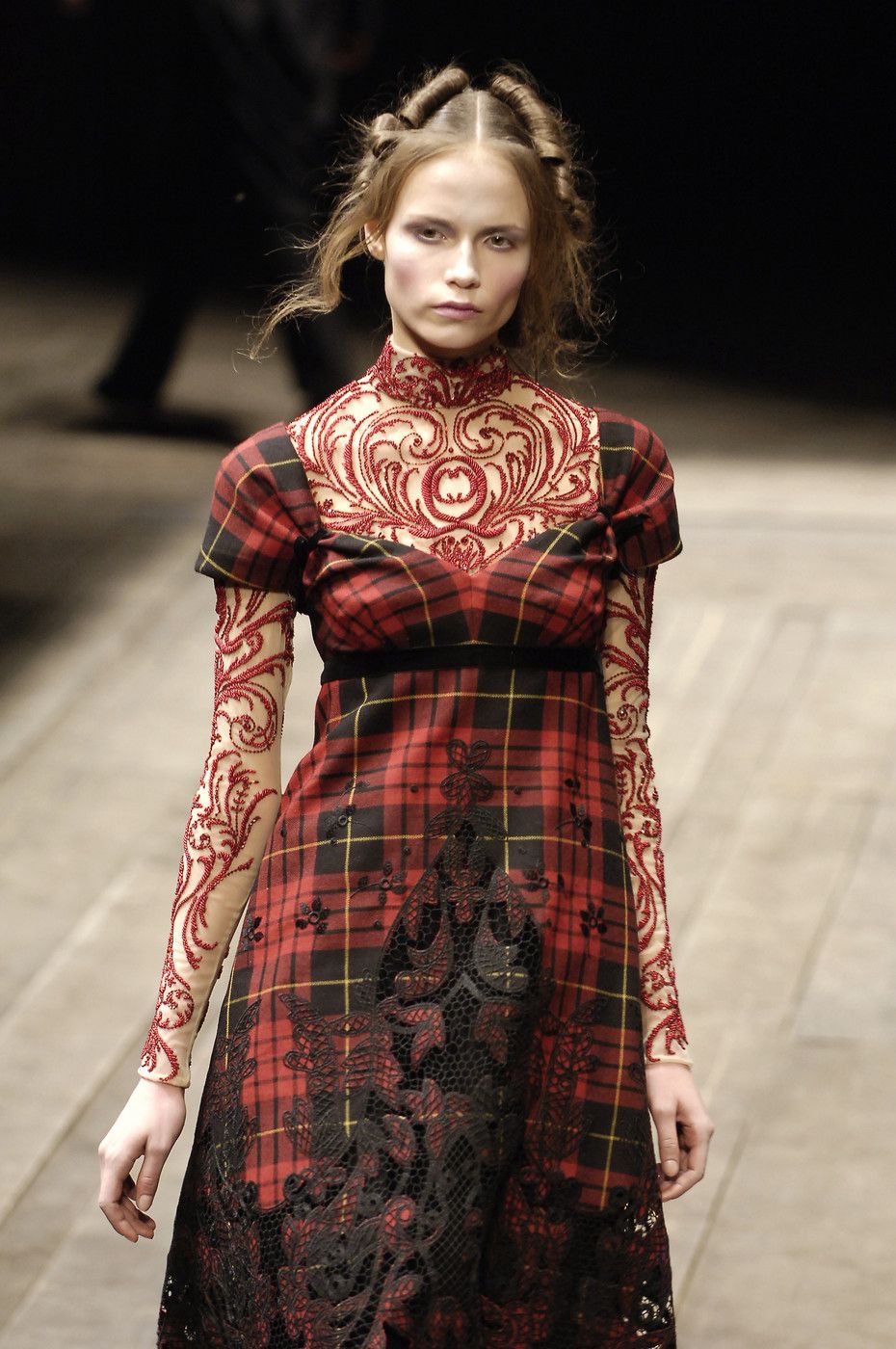
Image Credit Pinterest
Alexander McQueen: Embroidered Tartan
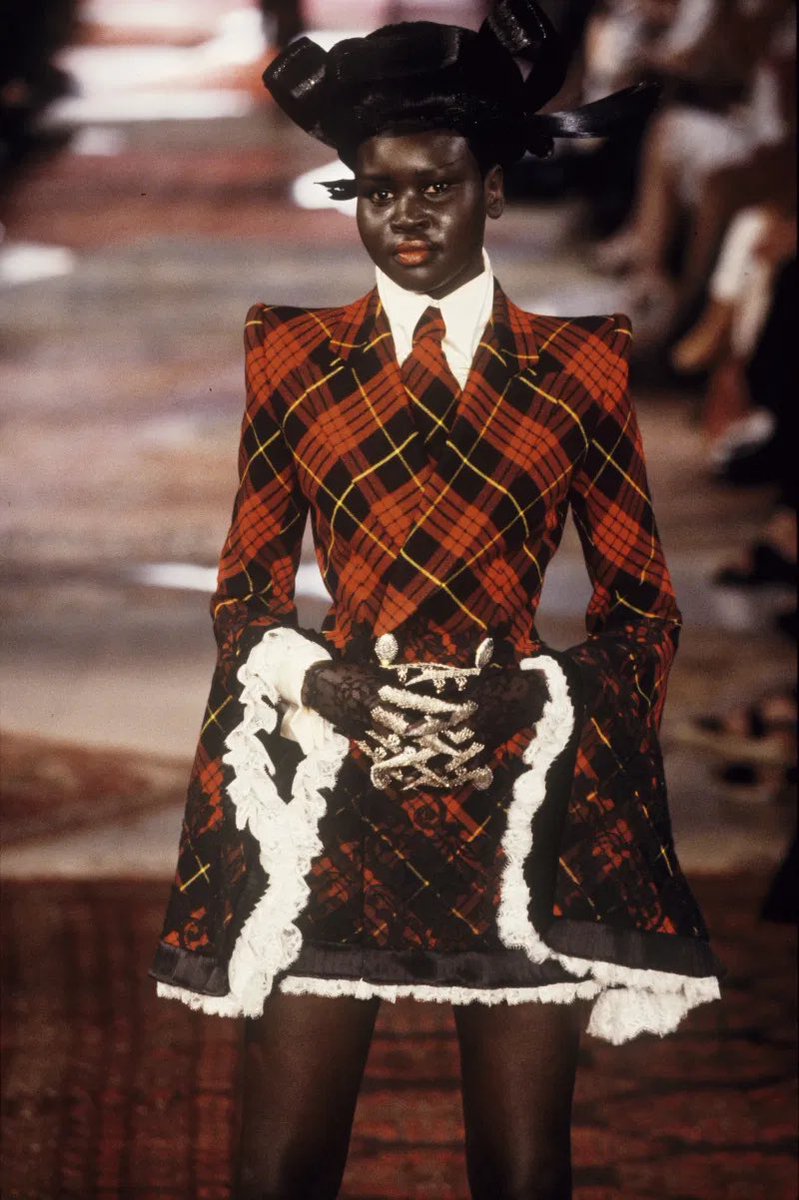
Image Credit Givenchy FW 1997
Alexander McQueen for Givenchy
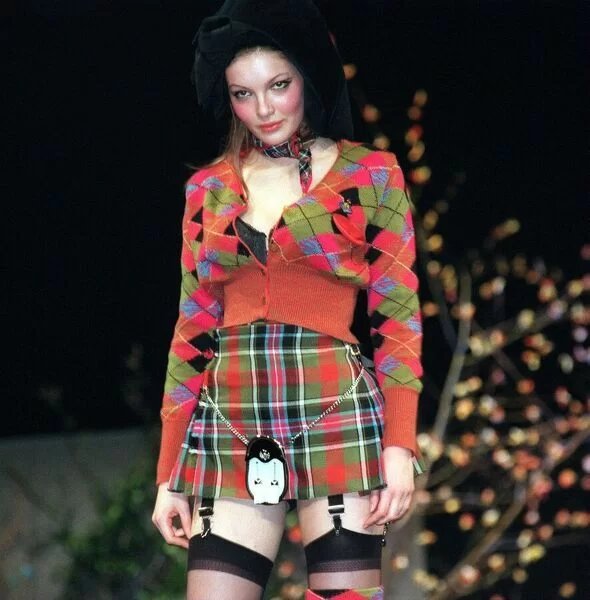
Image Credit Storehouse
Mini-kilt and micro sporran!
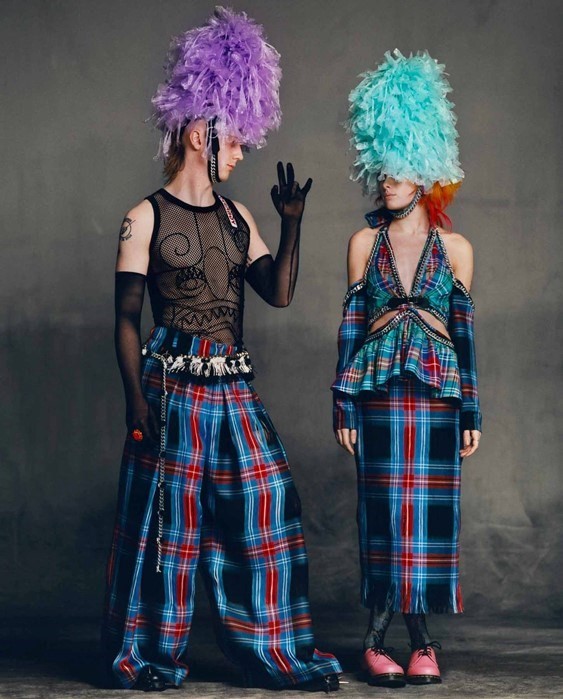
Image Credit dazeddigital
Tartans tell a story

Image Credit hbz
Tartan Chaos
THE YARNS AND WEAVES
Crofting and weaving are the mainstay of the island. Just like centuries ago the local mills and looms still roll out beautifully soft and delicately-coloured plaids. Forever part of this special land, traditional dress is created from the local hardy sheep’s wool, coloured with island vegetable dyes and often woven locally. Skye’s otherworldly landscape, its constantly changing weather and shifting light are ever-present reminders this is a magical and unusual place, so don’t get too comfortable! People can retreat to their crofts and castles, but exiled to the heather are the Skye sheep – that irreplaceable source of woolly warmth!
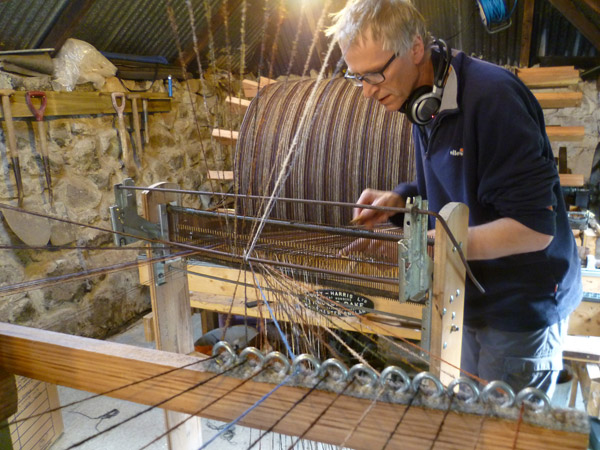
Image Credit Skye Weavers
Loom Shed
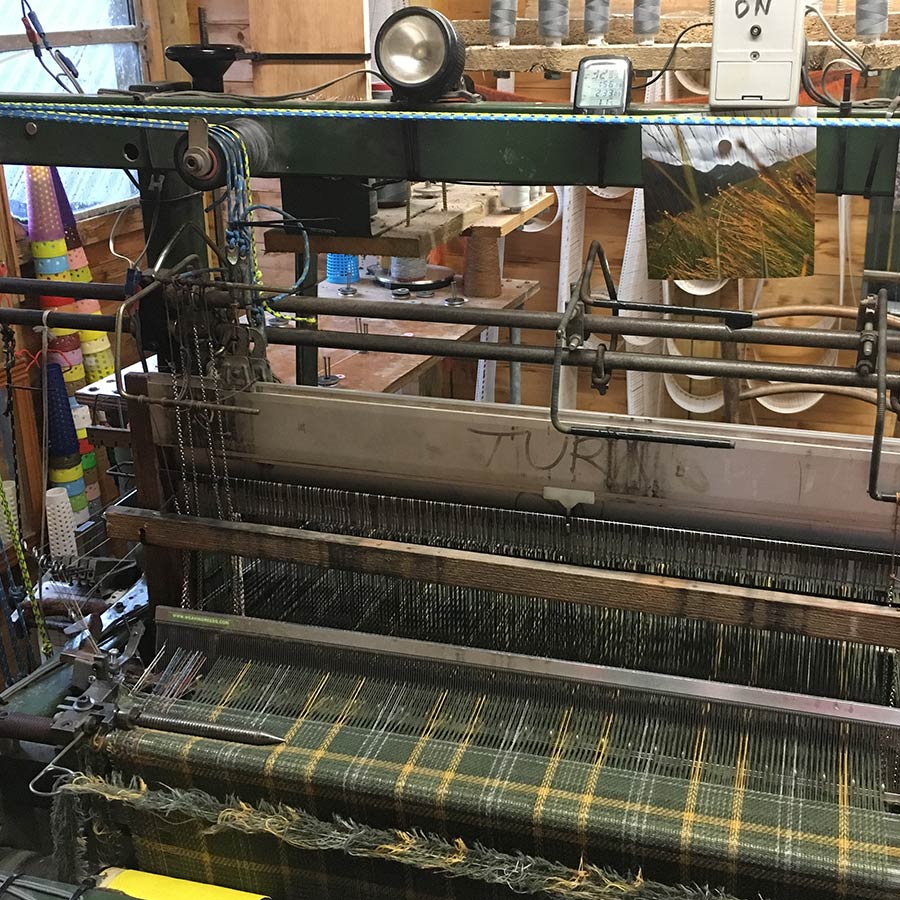
Image Credit Skye Weavers
Tartan Cloth being woven
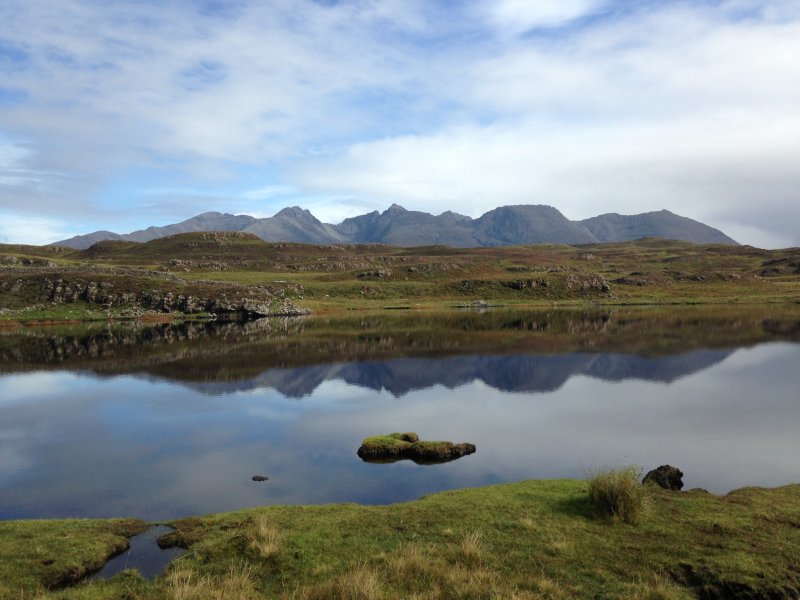
Image Credit Canmore
The Cuillins
THE LANDSCAPE
But let’s tear ourselves away from our beloved fashion and cloth and cast our eyes over the green, dreamy landscape of ancient stone-age circles that crown the sacred hilltops. These circles have patiently guarded this wilderness for millennia.
History lesson continues … Before the time of ancient Rome, the dozens of ancient broch sprinkled across the rocky ridges and sea cliffs of Skye record man’s early attempts to share and tame the island. Into the modern age of the 8th and 9th centuries Celtic carved stones and crosses mark the place of churches that have long since crumbled to dust. Soon followed the Vikings, their shipyards, canals and workshops, there to service their longboats raiding and trading on the western sea routes, leaving us with a legacy of their festivals and heroic sagas. Celtic legend has it that Irish folk hero Chu Chulainn schooled warrior woman Scathach on this very special sacred and spiritual patch.
Never quite the great pilgrimage spot like its counterparts Mull and Iona to the south, Skye is none the less synonymous with spiritual escape and the transition to a realm beyond our ordinary world. The Kingdom of the Isles, of which Skye was the largest island, was a seafaring realm, a society of clans, spanning across all the western isles from Cape Wrath in the far northwest of Scotland to Cape Castle on the Irish north shore. Travel and trade were by the sea, the waterways around the islands were their highways linking the Orkney and the Shetland isles, Ireland and all the way to Norway. The longboat traditions endured for centuries, including the gathering of delectable sea-food, still to be relished today.
Watch a video of the Isle of Skye here:
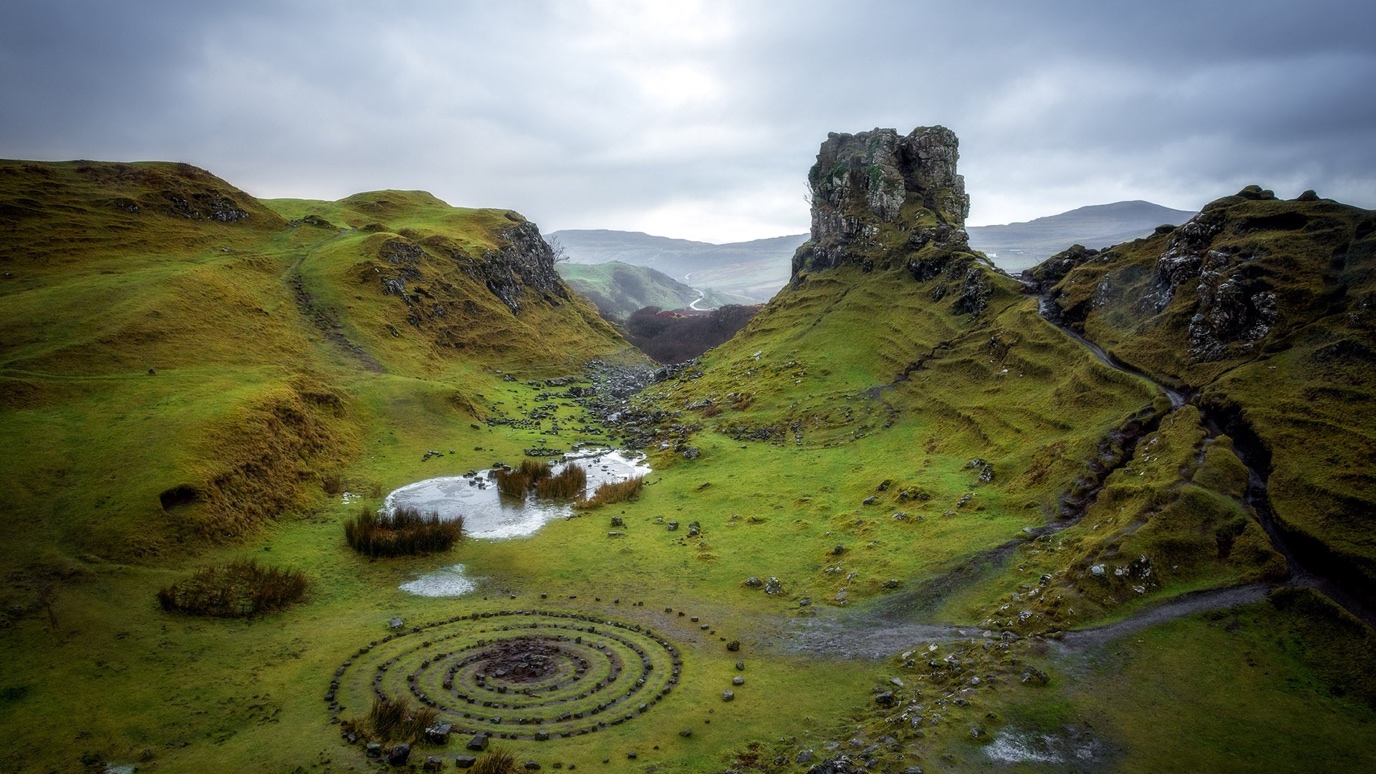
Image Credit Windows10 Spotlight
The natural castle and garden at Fairy Glen
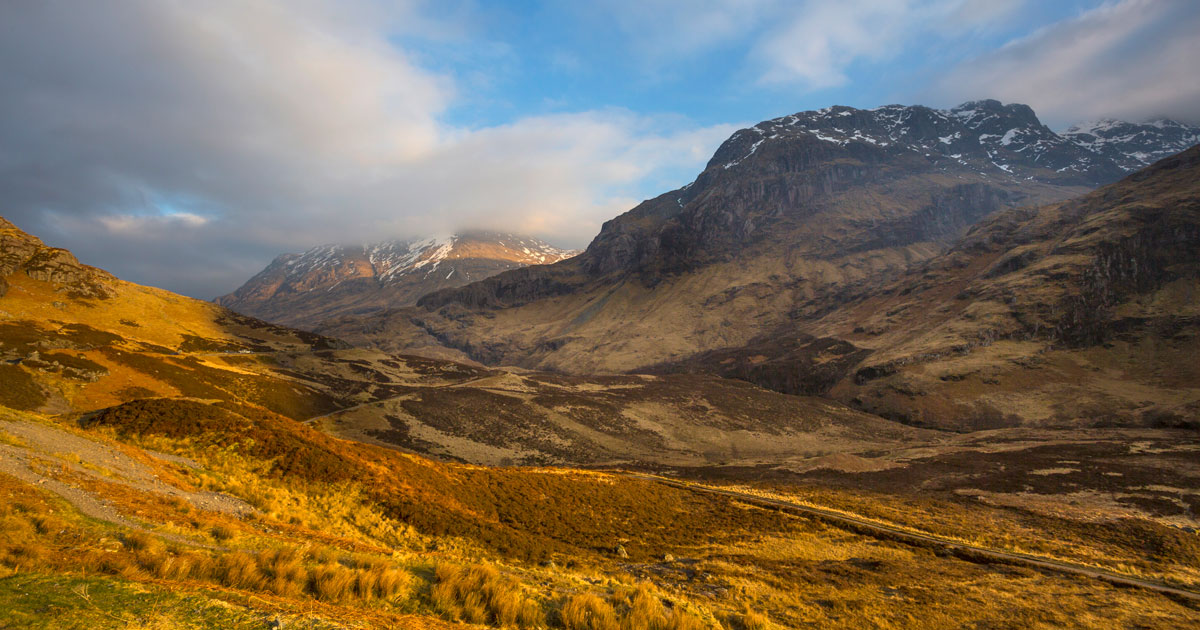
Image Credit Visit Scotland
The Cuillins
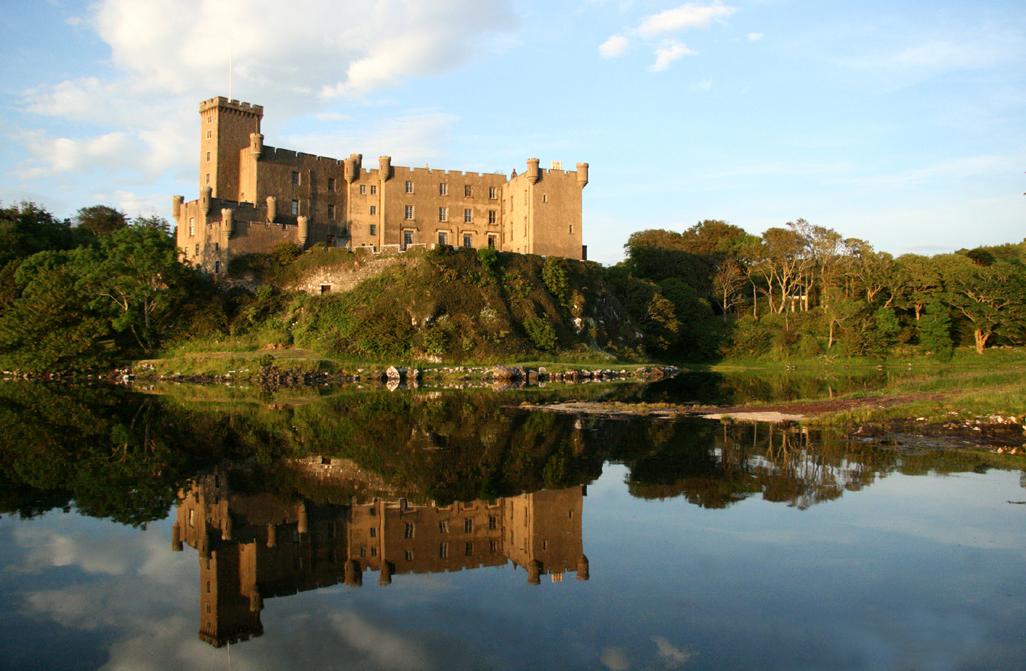
Image Credit The Herald
Dunvegan Castle
CULINARY DELIGHTS
Skye not only offers unbeatable nourishment for the spirit, but the best of food for the stomach! Fresh and wholesome culinary delights are plentiful. The island still boasts a rich and exquisite seafood fare of langoustine, crab, mussels and shrimps, not to mention the king’s fish, salmon, and the delicate river trout. Check out the Isle of Skye Food Festival in summer!
And for a true taste of Skye, the best authentic new cuisine must be the unique Three Chimneys Restaurant, a charming old white-washed cottage on the banks of Loch Dunvegan. This delightfully dainty hotel and exquisite eatery offers only local fresh produce, supplied from the nearby crofts and fisherfolk.
Alternatively, the brilliant little tin shed Café 1925 at Ardvasar on South Skye close to the Armadale Ferry offers fine dining in the unique old Village Post Office shack. This most endearing of tin sheds is the venue for home baking of the freshest and most wholesome dishes.
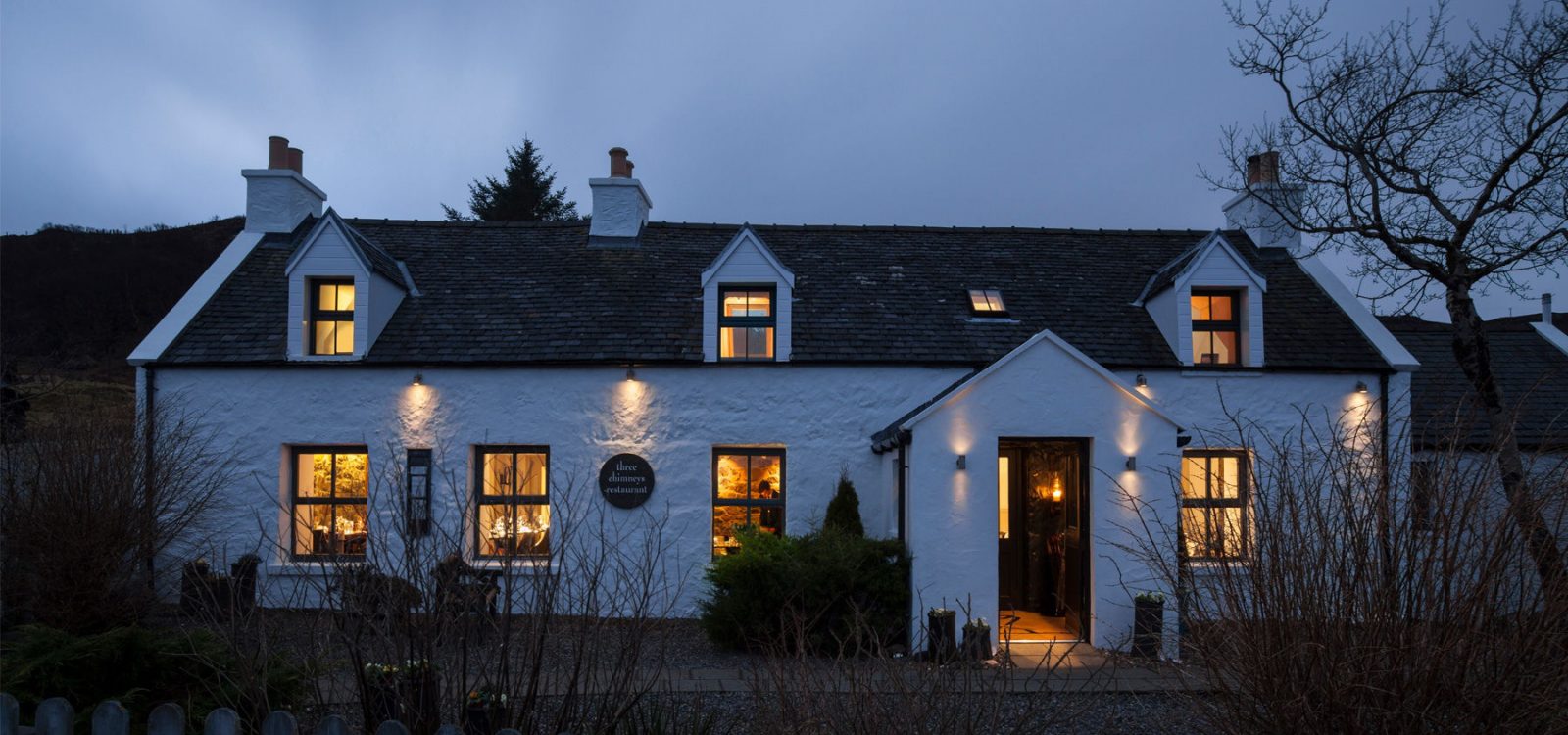
Image Credit The Three Chimneys
The Three Chimneys Restaurant
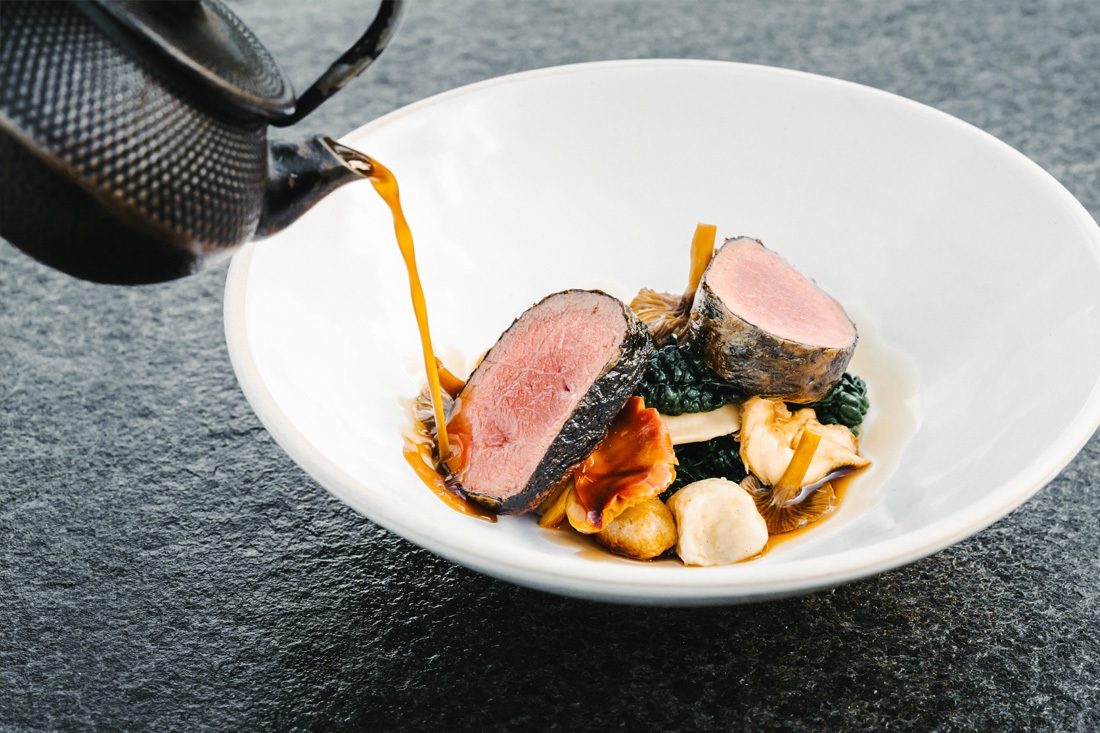
Image Credit The Three Chimneys
Venison and Mushrooms
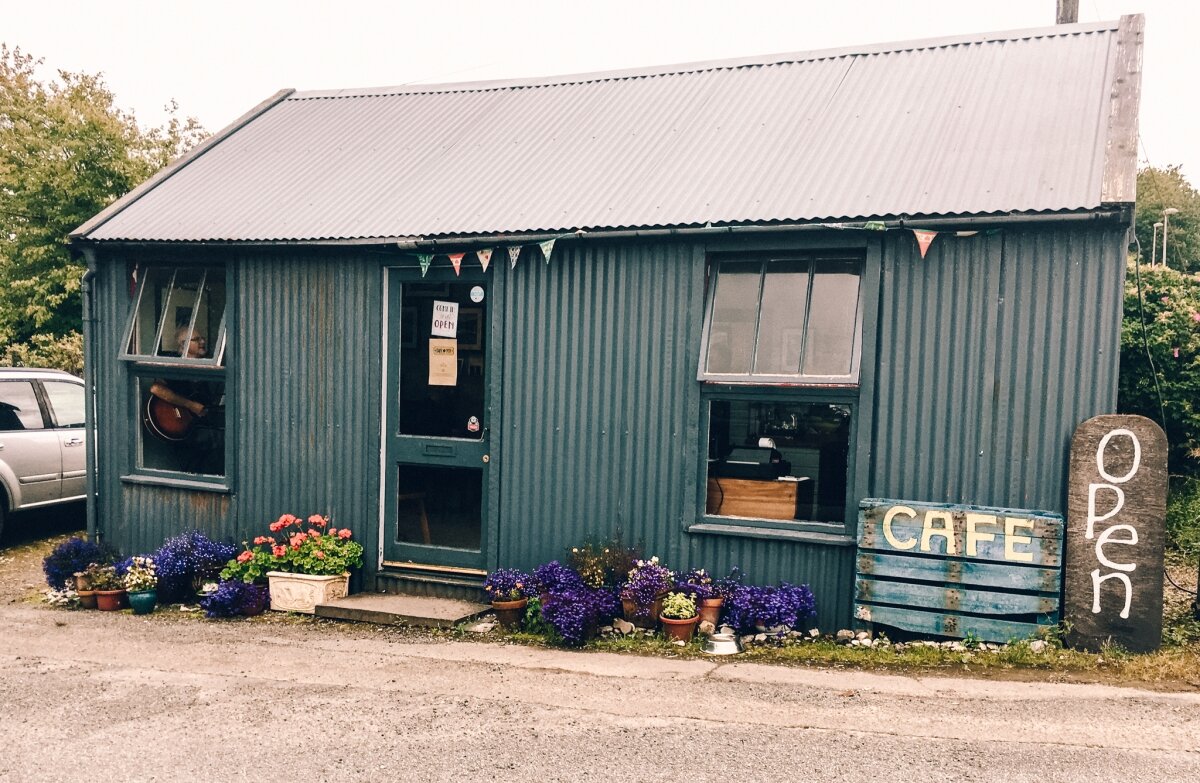
Image Credit 10 Best Restaurants on Sky
The crinkly tin Cafe1925
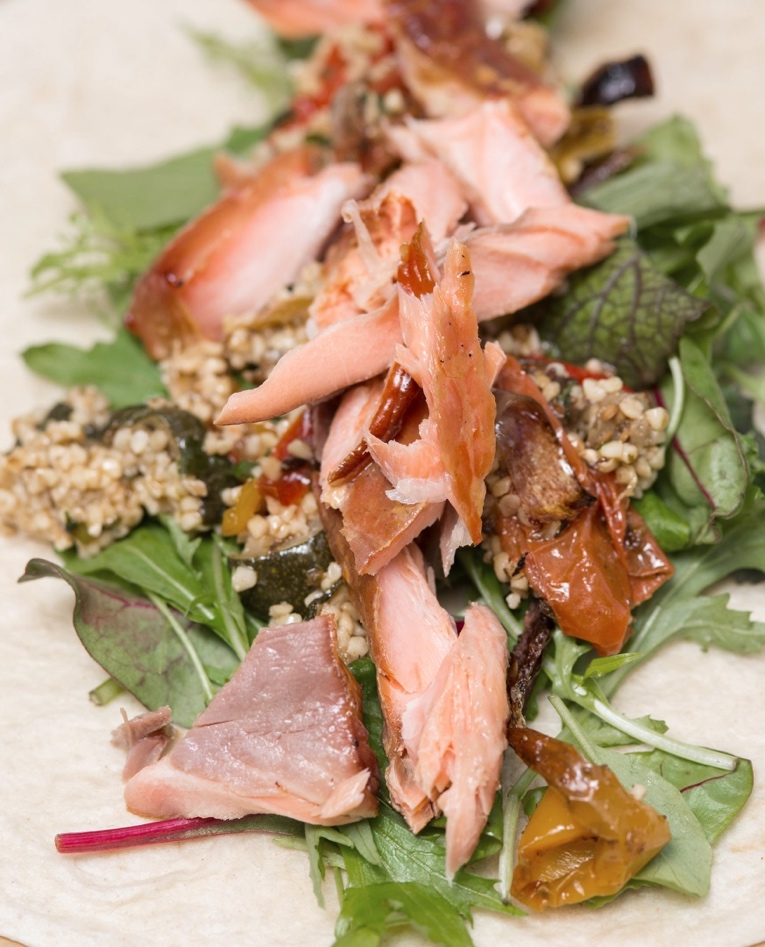
Image Credit 10 Best Restaurants on Sky
Cafe1925 Smoked Salmon Salad
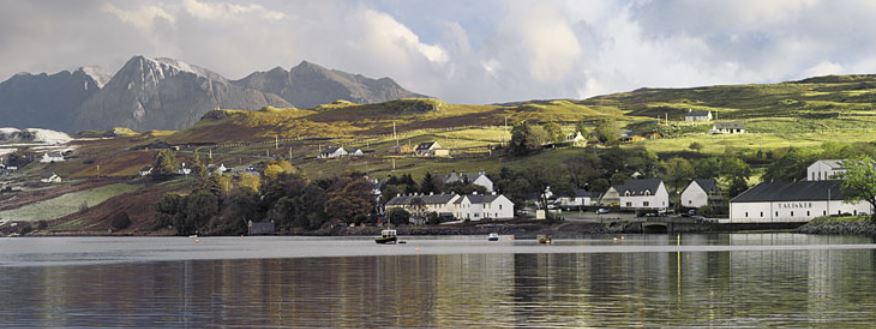
Image Credit Somerset Whisky Blog
Talisker Whisky Distille
WHISKY
Skye is blessed with a bevy of boutique whisky distilleries. It is a single malt world, and only 40 miles east across the sea from the celebrated ‘Whisky Galore’ shipwreck site on the Isle of Eriksay. Skye is home to famous boutique whisky makers, Talisker and Torabhaig. Perhaps the most charming and romantic is the tiny and new Raasay distillery on the Island of Raasay, also a miniature lost world, east of the main island, complete with its ruined castle and table-top mountain (and to boot it’s also the birthplace of Gaelic poet, Sorley Maclean).
Whatever the weather – wild and wet, walking or wandering, weaving or whisky, castles or crags, fabrics or foods – Skye offers a real mythical feast. The landscape is still angry and untamed and that’s perhaps the ultimate charm of Skye – it’s still a wilderness, is a thing to marvel at, a magical force with true transformative power. That’s why people keep returning ‘over the sea to the Isle of Skye’.
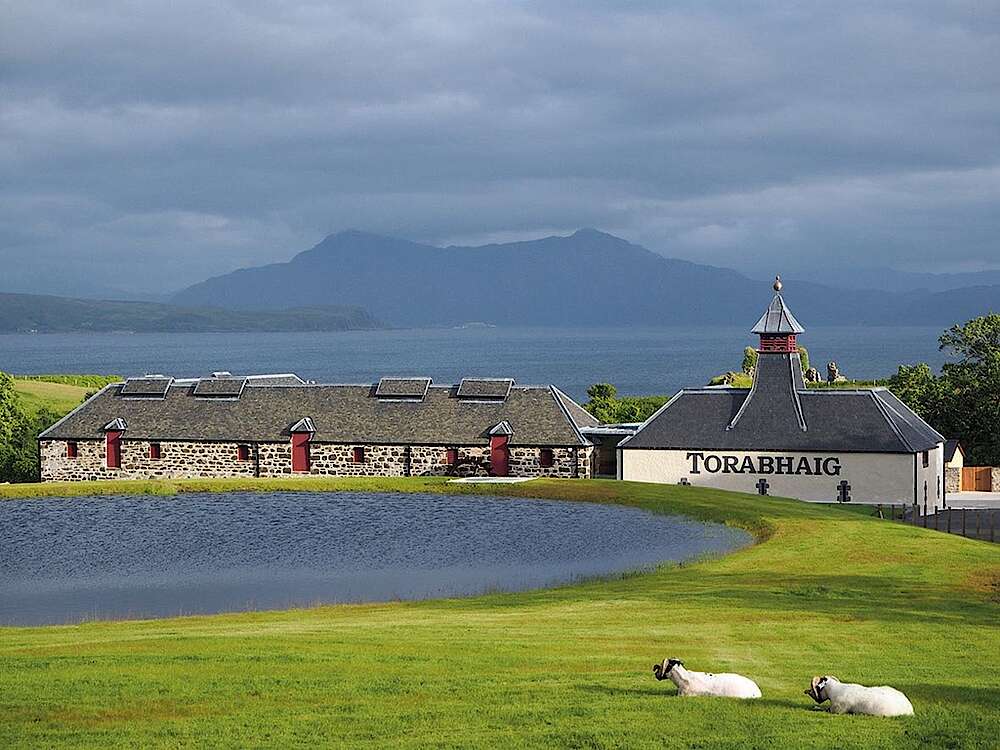
Image Credit Torabhaig
Torabhaig Distillery
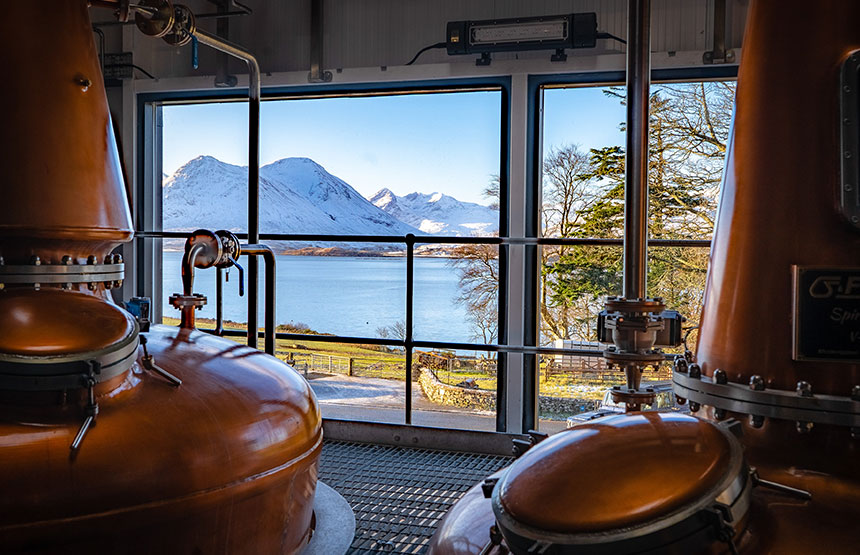
Image Credit Whiskyfacile
Isle of Raasay Distillery
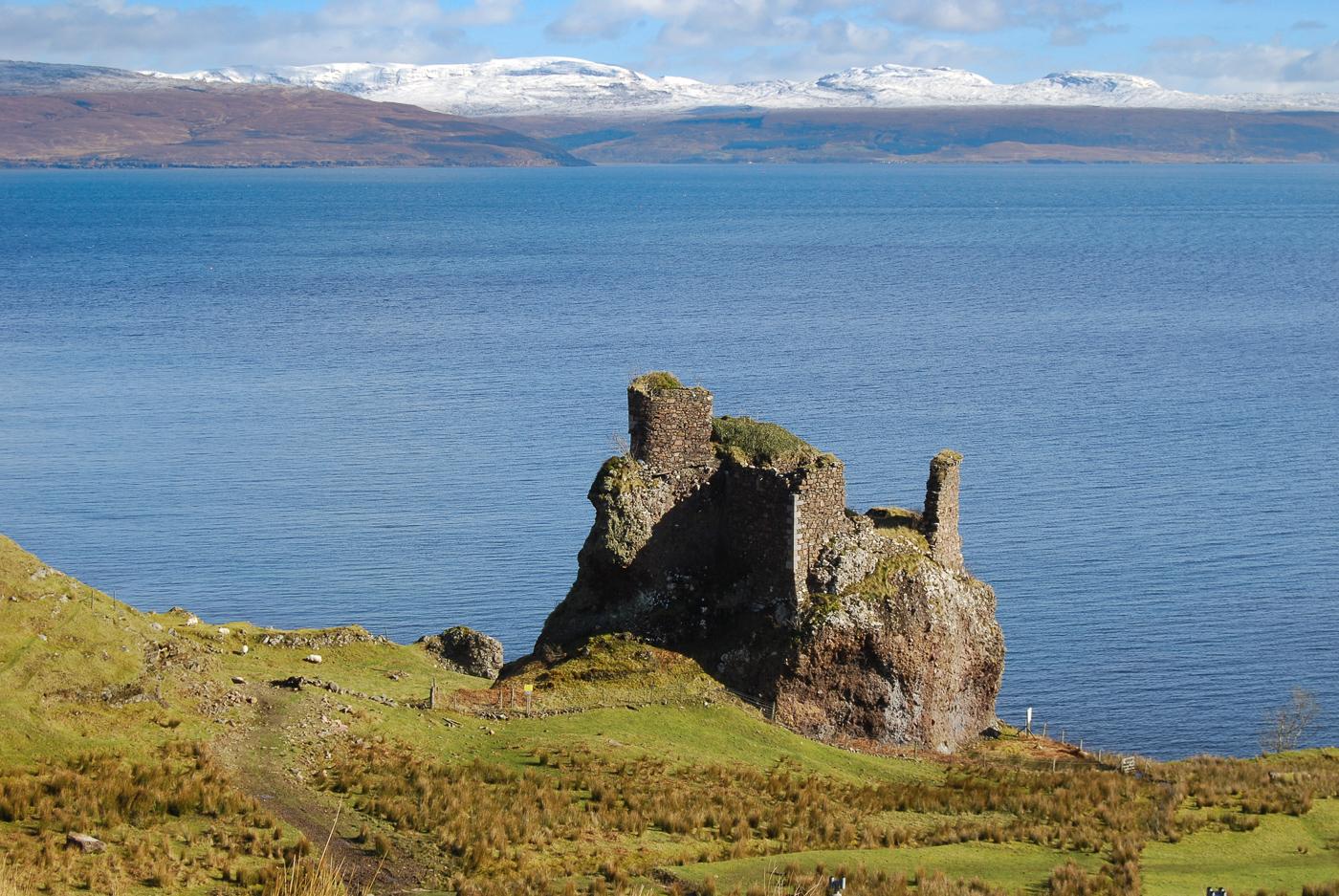
Image Credit Walkhighlands
Woolly visitors flock to rock-hugging Brochel Castle on Raasay
USEFUL LINKS:
- Visit Scotland/ Isle of Skye
- The Skye Museum
- Fashion in Skye (BBC)
- Fashion in Skye (The Orkney News)
- Alexander McQueen
- Vivienne Westwood
- Yohji Yamamoto
- Isle of Sky Food Festival
- Café 1925
- The Three Chimneys Restaurant
- Talikser Distillery
- Torabhaig Distillery
- The Raasay Distillery
- Sorley Maclean

